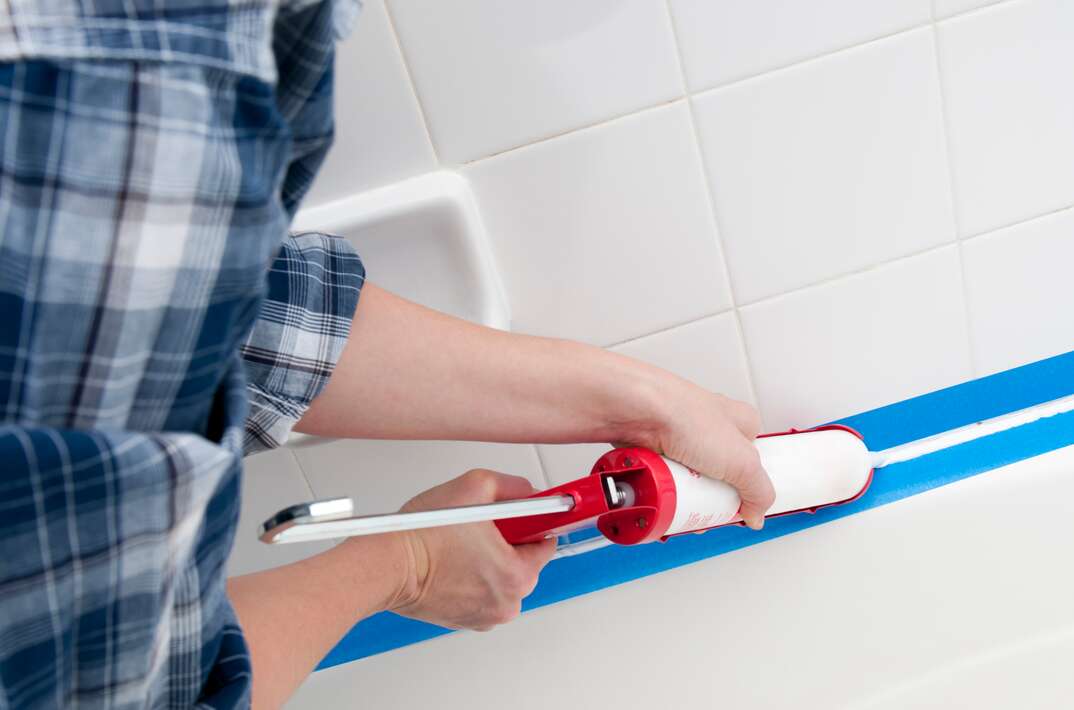How to Recaulk Around the Bathtub and Shower

You may not realize it, but ensuring that the caulking in your bathroom is in good shape is one of the most important things you can do to keep things looking fresh and clean. Caulk prevents water from sneaking into places where it’s not supposed to go, and not having a proper seal can lead to mold and mildew growth, as well as costly water damage.
This May Also Interest You: How to Use a Caulking Gun
That’s why, when the caulk around your bathtub and shower starts to show signs of aging (yellowing, cracking and peeling), you’ll want to replace it immediately.
Type of Caulk to Use in the Bathroom
When it comes to caulk, having the right type can matter greatly. For example, because you’ll want a caulk that can be in direct and regular contact with water, This Old House says you’ll want to make sure you purchase a caulk that’s labeled for use in the kitchen and bathroom. This type is either made of silicone or acrylic latex that’s been altered to prevent the growth of mold and mildew and stick to nonporous surfaces like glass, metal and plastic. While both of these will work around a bathroom or shower, they each have their specific characteristics that are worth considering before you purchase.
For example, silicone caulk is both highly durable, waterproof and long-lasting, but it’s also significantly more difficult to work with than acrylic latex caulking. What’s more, silicone caulk also emits a strong odor until it’s completely cured.
On the other hand, acrylic latex is much easier to apply. It’s also virtually odorless and can be cleaned up with water. That said, acrylic latex caulk is softer and will have to be replaced more often than silicone.
How to Recaulk: Step by Step
Things You’ll Need
- Caulking gun
- Caulk tube (more than one if covering a larger area)
- Two lint-free rags
- Mineral spirits
- Putty knife, utility knife or 5-in-1 tool
- Painter’s tape
Step 1: Remove Existing Caulk
Use a putty knife, razor blade or 5-in-1 tool to remove the old caulk from around the tub. To avoid scraping and potentially damaging the tub, keep the angle of the blade as low as you can. As you pry off the existing caulking, make sure you remove all of it because new caulking won’t stick to any old stuff.
Step 2: Clean the Surface
Make sure you’re working with a caulk- and mold-free surface. Add a small amount of mineral spirits to a soft, dry sponge and wipe down the perimeter of the tub and shower. Dry the area thoroughly.
More Related Articles:
- 10 Tools You Probably Don’t Have (But Definitely Should)
- How to Use a Voltage Tester
- Splash Course: How to Use a Power Washer
- What Is Screwdriver ‘Cam Out’ and How Can I Avoid It?
- Tale of the Tape: How to Use Painter’s Tape
Step 3: Apply the Caulk
To ensure that your caulk application stays straight, uniform and mess-free, lay two parallel strips of blue painter’s tape along the joint, roughly 3/8 inch apart. While you may be tempted to skip this step, you’ll be thanking yourself when there’s less mess to clean up after you finish.
After you’ve laid the painter’s tape, use your caulk gun to apply the caulking to the joint. Before you apply, trim the nozzle hole at a 45-degree angle near the tip. The hole should be roughly 3/16 inch.
From there, point the nozzle toward the joint and apply firm yet steady pressure to the trigger of the caulk gun and move it along the length of the joint.
Applying caulk can be tricky, but the key is keeping the caulk flowing at the appropriate rate so that you apply an even bead of caulk. Moving the caulk gun too fast or slow will result in a bead that’s too thin or has bubbles in it.
You might want to practice on a piece of folded paper or cardboard to get the hang of it before you start the project. Check out our tips for applying caulk here.
Step 4: Smooth Out the Caulk
Directly after applying caulk to the joint, use a damp rag to smooth the bead of caulk and press it into the joint. You’ll need to work quickly, as some types of caulk can start to harden within 15 minutes. Carefully pull the rag along the joint in a continuous motion, much like when you applied the caulk using the gun. You can also use your finger for this. If you do, make sure to keep it slightly moist as you work. Afterward, the bead should be both smooth and slightly concave.
Step 5: Remove the Tape
Right after you’ve smoothed the caulk, carefully remove the painter’s tape without letting it touch the caulk. If you wait too long to remove it, the caulk might harden over the tape and be difficult to remove.
Once the tape has been removed, let the caulk dry for at least 30 minutes before using your shower or bathtub. But keep in mind that it’ll take about 24 hours to cure, so try to minimize use during that time frame.
Caulk Is the Secret to a Clean Bathroom
Now you know how to recaulk your bathroom. Generally speaking, you should try and replace the caulk in your bathroom about every five years. That way, you won’t have to worry that small, undetectable leaks will allow water to wreak havoc behind your shower and tub. In addition, you’ll get to enjoy a clean and fresh-looking bathroom for years to come.


